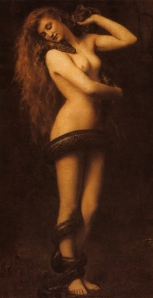

You had the seal of perfection, Full of wisdom and perfect in beauty.
You were in Eden, the garden of God…
…You were the anointed cherub who covers, and I placed you there.
You were blameless in your ways
From the day you were created until unrighteousness was found in you.
By the abundance of your trade You were internally filled with violence, and you sinned.
Therefore I have cast you as profane from the mountain of God…
…Therefore I have brought fire from the midst of you;
it has consumed you.

—Ezekiel 28:11-19
How you have fallen from heaven,
O star of the morning, son of the dawn!
You have been cut down to the earth,
You who have weakened the nations!
But you said in your heart,
“I will ascend to heaven;
I will raise my throne above the stars of God,
And I will sit on the mount of assembly
In the recesses of the north.”
—Isaiah 14:12-13
While the above verses tell of God’s judgement against foreign Kings who oppose Israel (i.e. the King of Tyre in Ezekiel and the King of Babylon in Isaiah), later Jews and Christians interpreted them as referring to Satan (2 Cor. 11:14; Luke 10:17-20; Rev. 12:9). The tradition of Satan as the cosmic enemy of God and his fall first appear relatively late in Judaism (post-exile), explaining the figure’s large absence in the Bible. Thus, later writers felt the need to embellish his story.
I plan on writing a more comprehensive article dedicated to the historical origin and evolution of Satan in the near future, but for now I would like to share some fascinating Jewish and Christian myths that expanded upon Satan in relation to Genesis. Here we’ll deal with those relevant to Creation and the Fall of Adam and Eve.
Continue reading →









